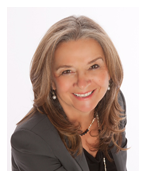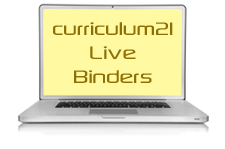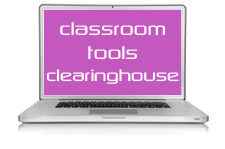Tags
Archives
About Heidi
 Dr. Heidi Hayes Jacobs is internationally recognized for her seminal work in contemporary curriculum design, vertical mapping and modernizing responsive school environments. She is founder and president of the Curriculum Designers Group, providing professional services to schools and organizations internationally to upgrade curriculum and support teaching strategies to meet the needs of 21st century learners. Dr. Jacobs’s models on curriculum mapping and curriculum design have been featured in her thirteen books and are the basis for software solutions used throughout the world.
Dr. Heidi Hayes Jacobs is internationally recognized for her seminal work in contemporary curriculum design, vertical mapping and modernizing responsive school environments. She is founder and president of the Curriculum Designers Group, providing professional services to schools and organizations internationally to upgrade curriculum and support teaching strategies to meet the needs of 21st century learners. Dr. Jacobs’s models on curriculum mapping and curriculum design have been featured in her thirteen books and are the basis for software solutions used throughout the world.
Working with a range of organizations both international and national, state and provincial education departments, professional organizations such as ASCD, NAESP, Learning Forward, the European Council of International Schools, the Near East School Association, the College Board, ADK International Sino-Canadian Schools in China, New Zealand’s Learning Network, the Kennedy Center, the Peace Corps World Wise Schools, Carnegie Hall, Australia’s EduTech,, and the United Nations Council on Teaching about the UN, the Near East School Association, the International Baccalaureate, the NY State Higher Education Commission, the CCSSO workgroup on Global Competencies, and AASA.
In 2014 she received the MAIS International Educator Award in Seville, Spain. She was an adjunct associate professor at Columbia University Teachers College in NYC from 1981- 1992 and continues to periodically teach courses and work on projects there. She has served as a program development advisor to Amazon Studios’ children’s programming division. She is currently working with the Waterford Institute on its literacy software platform and with Newsela on its curriculum collection. Core to her experience is direct work with over a thousand schools throughout the world reflecting the full range of public, private, religious, charter, and specialized settings. If an extended list sampling these school consultations is available upon request.
Her recent work on the modernization of schools appears in her book, co-authored with Dr. Marie Alcock, Bold Moves for Schools: How We Create Remarkable Learning Environments published by ASCD and Active Literacy: Active Literacy Across the Curriculum: Connecting Print Literacy with Digital, Media, and Global Competence, K-12, published by Routledge. Her four-book series on Leading the New Literacies, Mastering Digital Literacy, Mastering Media Literacy, Mastering Global Literacy, were by Solution-Tree are seminal works. Her best-selling, Curriculum Mapping: Tools and Templates and Curriculum 21 both with ASCD have been the basis for a wide range of professional services provided by a talented faculty and a robust clearinghouse giving educators resources to upgrade classroom life. Her career in education began as a high school, junior high, and elementary teacher in Utah, Massachusetts, and New York.
She received her doctorate from Columbia University Teachers College in NYC in Curriculum and Teaching on the Graduate Leadership Fellowship from the U.S. Department of Education in 1981. Her M.ed. is from the University of Massachusetts completed in 1976 in Educational Leadership. Her B.A. from the University of Utah majoring in history and education with her language requirement in Russian. She and her husband reside in Westchester County outside New York City.
Resource Hub
 |

Definition of a Hub:“A place or thing that forms the effective center of an activity, region, or network…” |
||
 |
|||
Mapping to the Core
Mapping to the Core is now a LiveBook and a LivePlanner
 |
 |
 |
Because of the Curriculum 21 team’s strong background in curriculum design and curriculum mapping, the team is prepared for and committed to the successful implementation of the Common Core State Standards in schools, school districts, and state departments of education. We can help you
- gain a deeper understanding of the Common Core Standards and determining the implications for curriculum, instruction, and assessment
- develop curriculum maps that align and integrate the Common Core Standards
- align all elements of the maps to the Common Core Standards
- support the identification, creation, and alignment of all performance-based assessments through the mapping process.
Preparing Our Kids for 1982 : Time Traveling through Testing
Cross posted to ASCD Edge
Are your students time-traveling on testing day? Back to the 1980’s- let’s go.
If your tests are overwhelmingly multiple choice, fill in the blank, short constructed essay, longer extended essay whether open book or open note, then welcome back to the old days. I did some archival research online and found tests and items that went back to the late 1970’s and early 1980’s and found that they are identical TYPES of assessment to present day assessments. In many instances, they are identical in content as well.
Not only are the types of tests the same, too often so are the tools. We continue to venerate the #2 pencil. I wonder, when the pencil was invented, did kids have to go to PENCIL-LAB?… Did they march down the hall to the lab, return to the classroom, pick up their quills, dip them in an inkwell and proceed back to “work”?
Is there hope? Yes, I am reminded of the state of Rhode Island’s policy of graduation by proficiency with a student developed digitalized portfolio beginning with the primary grades through to graduation. I would direct readers to the CCSSO EdSteps project with a remarkable new way to collect a national pool of student work. Authentic dynamic assessments are emerging in pockets and in classrooms around the country. Let’s surface them prominently and especially those that are geared toward 2020. Curriculum 21 calls for upgrading on all levels- one replacement at a time. Are our student assessments reflecting moderns forms of media and contemporary issues? Some argue that new forms diminish the traditional skills, I disagree. If our students are engaged then we will see better quality basics. We can and must show reading, writing, speaking, and listening skills- whether in a web 2.0 application or creating a documentary. If a student cannot read, he or she cannot read a computer screen. The great fundamentals of the past need to be lifted into 2011.
On our C-21 Clearinghouse at the Curriculum 21 website we have posted open access tagged interactive tools for educators to try new approaches to engage their learners. We see this also as opportunity to update assessment practice as well. (For example, Take a look at gapminder and see how you might use it to engage your students in meeting an array of standards.) We are beginning a new project with ASCD on collecting upgraded projects from teachers around the world to share and to inspire us all moving forward. We will keep you posted on this one!
We need to choose our century. The students have chosen theirs.












